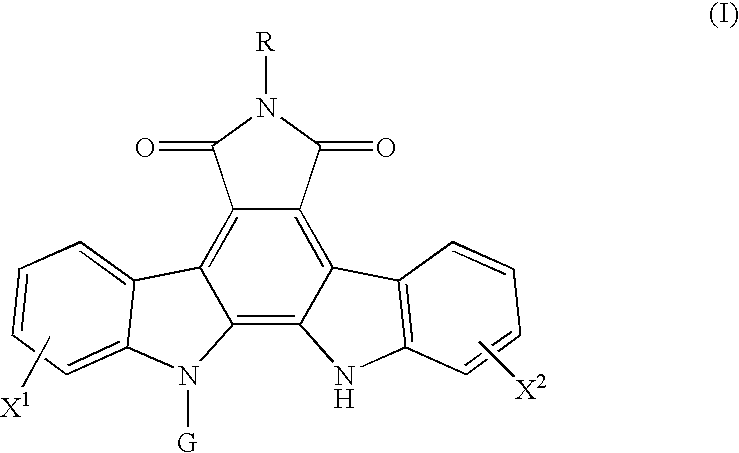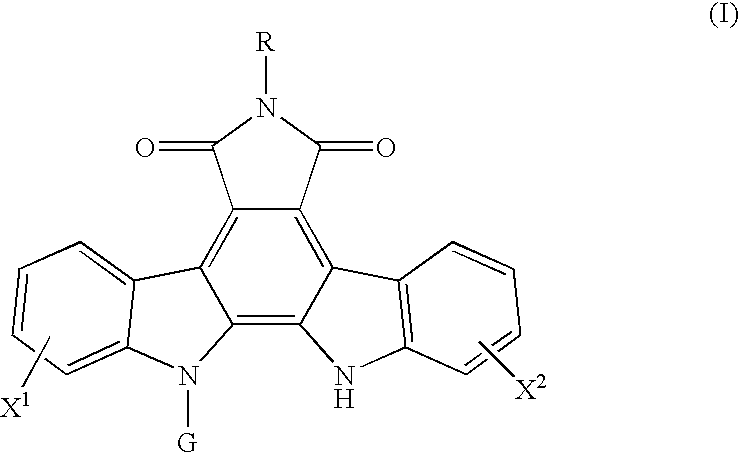Method for predicting a drug transport capability by abcg2 polymorphisms
a polypeptide and drug transport technology, applied in the field of polypeptides, can solve the problems of low effect of abcg2 expression in cancer cells, ineffective cell effect of anthraquinone drugs such as adriamycin, doxorubicin and mitoxantrone, and achieve the effect of reducing the drug transport capability of mutant abcg2 polypeptides and effective use of indolocarbazole compounds
- Summary
- Abstract
- Description
- Claims
- Application Information
AI Technical Summary
Benefits of technology
Problems solved by technology
Method used
Image
Examples
example 1
Identification of SNPs in Human ABCG2 Gene
[0080] The present inventors firstly extracted genomic DNAs from 30 human cancer cell lines and also from human clinical samples of 149 persons (whites) and identified the SNPs by sequencing the ABCG2 gene.
[0081] The 30 cancer cell lines are A-427, DLD-1, NCI-H69, HeLa S3, PC-13, MKN-45, UM-UC-3, HCT116, PA-1, RT4, MKN1, SK-OV-3, MADH, KATOIII, U118, HS746, T24, MSTO-211H, OVCR3, Lu135, Lx-1, SCC25, Cal27, MKN-74, SCaBER, BxPC-3, Hela, J82, NCI-H 187 and ES-2. Genomic DNA was extracted from those cell lines with Trizol reagent (Gibco BRL). Human clinical samples were purchased from IMPATH-BCP Co. Nucleotide sequences of sixteen exons and peripheral introns of the ABCG2 gene were determined by direct sequencing. Firstly, sixteen exons were amplified from genomic DNA by PCR (LA Taq Takara) using each pair of primers shown in Table 1. Next, amplified DNA fragments were treated with ExoSAP-IT (USB corporation) to digest remaining primers and t...
example 2
Preparation of Cell Lines Expressing mutated ABCG2
[0084] Among the polymorphic mutations identified in Example 1, two mutations—G34A and C421A—having a high possibility to affect the function of the ABCG2 polypeptide were prepared and introduced into animal cells as an endeavor to analyze their functions. Preparation of the mutated ABCG2 genes was conducted by PCR and a point mutation was introduced. After confirming the introduction of the target mutations by sequencing, the mutated genes were cloned into HindIII and XhoI sites of an expression vector pcDNA3.1(+) and expression plasmid for each mutant was prepared. As a control, a plasmid expressing the wild type (WT) ABCG2 and the vector plasmid pcDNA3.1(+) alone without the ABCG2 gene were used and those four kinds of expression plasmids were introduced to an animal cell (porcine kidney cell line) LLC-PKI by lipofection method (Lipofectamine; Gibco BRL). Stable transfectants were selected with 1,500 μg / ml of Geneticin (Gibco BRL...
example 3
Evaluation of Resistance to Compound B
[0085] The transfectant cells which were selected in Example 2 and in which nearly equal amount of ABCG2 mRNA was expressed were incubated (cultivated) in a 199 medium containing 1 mM of L-glutamine, 50 units / ml of penicillin, 50 mg / ml of streptomycin and 10% by volume of fetal bovine serum. All of the incubations were carried out at 37° C. under the humidified atmosphere containing 5% of carbon dioxide. The cytotoxicity of anticancer drugs was determined by sulforhodamine B dye-staining method and compared with each other. Specifically, four kinds of transformed cell clones were cultured at 37° C. for 72 hours in a medium containing Compounds B or camptothecin of various concentrations, then fixed with trichloroacetic acid and stained for 30 minutes with 0.4% sulforhodamine B dissolved in 1% acetic acid solution. After unbound dye was removed by four washes with 1% acetic acid, polypeptide-bound dye was extracted with 10 mM unbuffered Tris bas...
PUM
| Property | Measurement | Unit |
|---|---|---|
| temperature | aaaaa | aaaaa |
| temperature | aaaaa | aaaaa |
| temperature | aaaaa | aaaaa |
Abstract
Description
Claims
Application Information
 Login to View More
Login to View More - R&D
- Intellectual Property
- Life Sciences
- Materials
- Tech Scout
- Unparalleled Data Quality
- Higher Quality Content
- 60% Fewer Hallucinations
Browse by: Latest US Patents, China's latest patents, Technical Efficacy Thesaurus, Application Domain, Technology Topic, Popular Technical Reports.
© 2025 PatSnap. All rights reserved.Legal|Privacy policy|Modern Slavery Act Transparency Statement|Sitemap|About US| Contact US: help@patsnap.com



